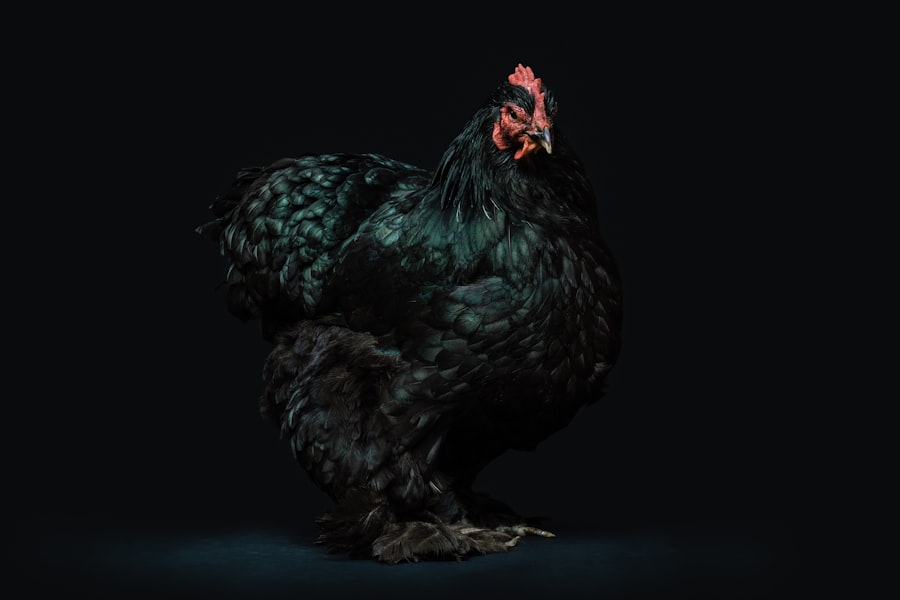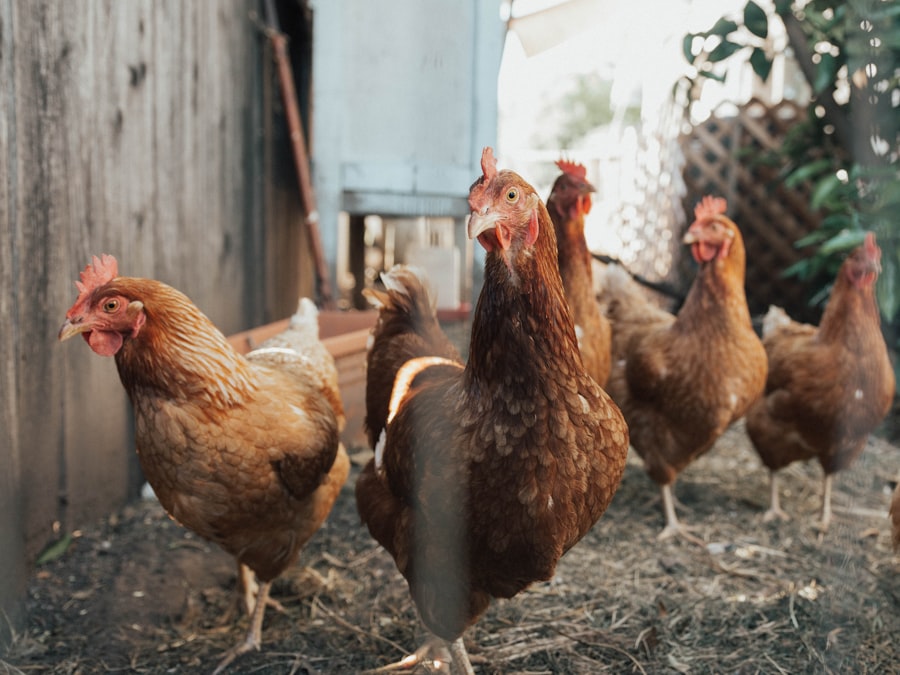When raising chickens, understanding space requirements is essential for their health and well-being. Chickens require sufficient space to move, exercise, and engage in natural behaviors like scratching and dust bathing. Insufficient space can result in stress, aggression, and increased disease risk.
Space needs vary based on breed, age, and purpose (e.g., egg production or meat). These factors should be considered when designing a coop and determining its capacity. Outdoor space for roaming and foraging is also crucial for chicken health and happiness.
Chickens with access to outdoor areas tend to be healthier, less stressed, and exhibit more natural behaviors. When calculating space requirements, both indoor and outdoor areas should be considered to ensure chickens have adequate room to thrive.
Table of Contents
- 1 Factors to Consider When Determining the Number of Chickens
- 2 The Importance of Proper Ventilation and Air Quality
- 3 Tips for Maximizing Space in a Chicken Coop
- 4 Potential Health Risks of Overcrowding in a Chicken Coop
- 5 Recommended Guidelines for the Number of Chickens per Square Foot
- 6 How to Monitor and Manage the Population in Your Chicken Coop
- 7 FAQs
- 7.1 What is the general rule for how many chickens can be kept in a coop?
- 7.2 How does the size of the coop affect the number of chickens that can be kept?
- 7.3 What factors should be considered when determining the number of chickens for a coop?
- 7.4 What are the consequences of overcrowding chickens in a coop?
- 7.5 Are there any regulations or guidelines for the number of chickens in a coop?
Key Takeaways
- Understanding the space requirements is crucial for maintaining a healthy and productive chicken coop.
- Factors such as breed size, age, and purpose of the chickens should be considered when determining the number of chickens for your coop.
- Proper ventilation and air quality are essential for preventing respiratory issues and maintaining overall health in the coop.
- Maximizing space in a chicken coop can be achieved through efficient design, organization, and utilization of vertical space.
- Overcrowding in a chicken coop can lead to stress, aggression, and increased risk of disease, making it important to monitor and manage the population carefully.
Factors to Consider When Determining the Number of Chickens
Breed and Size of Chickens
The breed of chicken plays a significant role in determining space requirements. Larger breeds, such as Orpingtons or Jersey Giants, require more space than smaller breeds like bantams.
Age and Purpose of Chickens
The age of the chickens is also an important consideration, as younger birds require less space than fully grown adults. Additionally, the purpose of the chickens, whether for egg production or meat, impacts space requirements. Birds raised for meat need more space to move around and exercise.
Coop Design and Layout
The layout and design of the chicken coop are crucial factors in determining how many chickens can be comfortably housed. A well-designed coop with ample roosting space, nesting boxes, and access to outdoor areas can accommodate more chickens than a poorly designed coop. It’s essential to provide enough space for each chicken to roost comfortably at night and access to nesting boxes for laying eggs.
By considering these factors, you can ensure that your chickens have enough space to live comfortably and exhibit natural behaviors.
The Importance of Proper Ventilation and Air Quality

Proper ventilation and air quality are essential for maintaining a healthy environment in a chicken coop. Good ventilation helps remove excess moisture, ammonia, and other airborne pollutants that can build up in the coop and lead to respiratory issues in the chickens. Adequate airflow also helps regulate temperature and prevent the buildup of harmful gases such as carbon dioxide and carbon monoxide.
Poor ventilation can lead to a range of health problems for the chickens, including respiratory infections, heat stress, and ammonia toxicity. In addition to ventilation, maintaining good air quality in the coop is crucial for the health and well-being of the chickens. This includes regular cleaning and removal of soiled bedding, droppings, and other waste materials that can contribute to poor air quality.
Providing adequate space for the number of chickens in the coop is also important for managing air quality, as overcrowding can lead to an accumulation of waste and increased levels of ammonia. Monitoring air quality and ventilation in the coop is essential for creating a healthy environment for the chickens to thrive.
Tips for Maximizing Space in a Chicken Coop
Maximizing space in a chicken coop is essential for providing a comfortable and healthy environment for the birds. One way to maximize space is by utilizing vertical space with elevated roosting areas and nesting boxes. This allows for more floor space for the chickens to move around and reduces clutter in the coop.
Another tip is to use removable or foldable equipment such as feeders and waterers to free up floor space when not in use. This can help prevent overcrowding and allow for more room for the chickens to roam. Additionally, keeping the coop clean and organized can help maximize space and create a more comfortable living environment for the chickens.
Regularly removing soiled bedding, droppings, and other waste materials will help prevent the buildup of ammonia and maintain good air quality in the coop. Providing ample outdoor space for the chickens to roam and forage can also help maximize space in the coop by reducing overcrowding indoors. By implementing these tips, you can create a more spacious and comfortable living environment for your chickens.
Potential Health Risks of Overcrowding in a Chicken Coop
Overcrowding in a chicken coop can lead to a range of health risks for the birds. One of the most significant risks is an increased likelihood of disease transmission among the chickens. Overcrowding can lead to stress, which weakens the immune system of the birds and makes them more susceptible to diseases such as respiratory infections, coccidiosis, and parasites.
Additionally, overcrowding can lead to aggressive behavior among the chickens, which can result in injuries and pecking-related issues such as feather picking and cannibalism. Poor air quality is another potential health risk of overcrowding in a chicken coop. Overcrowding can lead to an accumulation of waste materials such as droppings and soiled bedding, which can increase levels of ammonia and other airborne pollutants in the coop.
This can lead to respiratory issues such as ammonia toxicity and respiratory infections in the chickens. Overcrowding can also lead to increased levels of humidity and moisture in the coop, which can contribute to mold growth and respiratory issues. By managing population levels in the coop and providing adequate space for the chickens, you can help reduce these potential health risks.
Recommended Guidelines for the Number of Chickens per Square Foot

Indoor Space Requirements
As a general guideline, it’s recommended to provide a minimum of 2-3 square feet of indoor space per chicken in the coop. This allows for enough room for the chickens to move around, roost comfortably at night, and access nesting boxes.
Outdoor Space Requirements
For outdoor space, it’s recommended to provide a minimum of 8-10 square feet per chicken to allow for adequate foraging and exercise. However, it’s essential to remember that these are general guidelines, and individual circumstances may require adjustments to these recommendations.
Factors to Consider
Larger breeds may require more indoor and outdoor space than smaller breeds, and younger birds may require less space than fully grown adults. Additionally, providing access to outdoor areas can help reduce overcrowding indoors and provide additional space for the chickens to roam and forage. By following these recommended guidelines and considering individual circumstances, you can ensure that your chickens have enough space to live comfortably.
How to Monitor and Manage the Population in Your Chicken Coop
Monitoring and managing the population in your chicken coop is essential for maintaining a healthy living environment for the birds. Regularly assessing the behavior and well-being of the chickens can help you identify signs of overcrowding or stress. Aggressive behavior, feather picking, cannibalism, and increased levels of noise or agitation can be indicators of overcrowding or other issues in the coop.
Additionally, monitoring air quality by regularly checking for ammonia levels and maintaining good ventilation can help prevent health issues related to overcrowding. Managing population levels in the coop may involve reducing the number of chickens if overcrowding becomes an issue. This could include rehoming some birds or adjusting flock size based on available space and resources.
Providing access to outdoor areas can also help manage population levels by allowing for more space for the chickens to roam and reducing overcrowding indoors. Regular cleaning and maintenance of the coop can also help manage population levels by preventing waste buildup and maintaining good air quality. By monitoring behavior, air quality, and population levels in your chicken coop, you can create a healthy living environment for your birds.
In conclusion, understanding the space requirements, factors to consider when determining the number of chickens, proper ventilation and air quality, tips for maximizing space in a chicken coop, potential health risks of overcrowding, recommended guidelines for the number of chickens per square foot, and how to monitor and manage population levels are all essential aspects of raising chickens. By considering these factors and implementing best practices for managing population levels in your chicken coop, you can create a healthy living environment for your birds and ensure their well-being.
If you’re considering building or buying a chicken coop, you may be wondering how many chickens you can keep in it. According to a helpful article on Poultry Wizard, the size and design of the coop will determine how many chickens it can comfortably accommodate. Factors such as the type of coop, the breed of chickens, and the amount of space per bird are all important considerations. For more information on different types of chicken coops, check out this article on A-frame chicken coops.
FAQs
What is the general rule for how many chickens can be kept in a coop?
The general rule is to provide at least 2-3 square feet of space per chicken inside the coop.
How does the size of the coop affect the number of chickens that can be kept?
The size of the coop directly affects the number of chickens that can be kept. A larger coop allows for more chickens, while a smaller coop limits the number of chickens that can be comfortably housed.
What factors should be considered when determining the number of chickens for a coop?
Factors to consider include the size of the chickens, the breed, the coop’s layout, and the amount of time the chickens will spend inside the coop.
What are the consequences of overcrowding chickens in a coop?
Overcrowding can lead to stress, aggression, and an increased risk of disease and parasites. It can also impact egg production and overall chicken health.
Are there any regulations or guidelines for the number of chickens in a coop?
Regulations and guidelines for the number of chickens in a coop can vary by location. It’s important to check local ordinances and regulations before determining the number of chickens for a coop.
Meet Walter, the feathered-friend fanatic of Florida! Nestled in the sunshine state, Walter struts through life with his feathered companions, clucking his way to happiness. With a coop that’s fancier than a five-star hotel, he’s the Don Juan of the chicken world. When he’s not teaching his hens to do the cha-cha, you’ll find him in a heated debate with his prized rooster, Sir Clucks-a-Lot. Walter’s poultry passion is no yolk; he’s the sunny-side-up guy you never knew you needed in your flock of friends!








